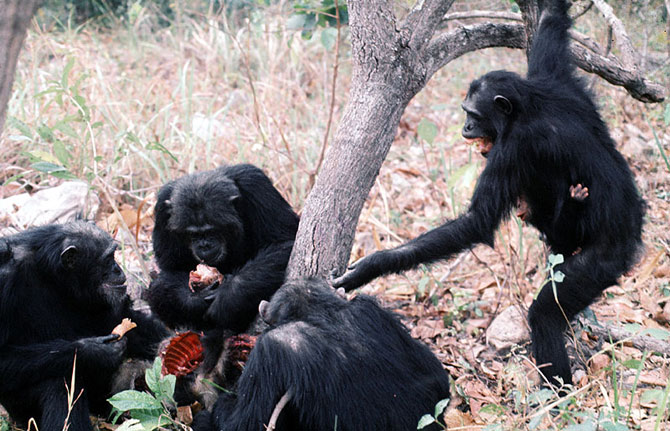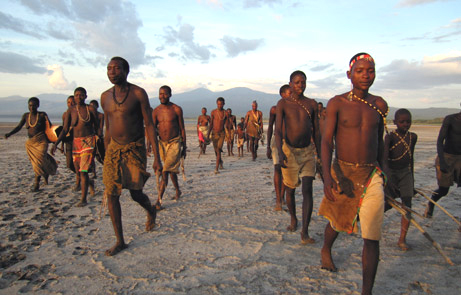 |
> MORAL SYSTEMS (SOCIALTY AND COMMUNICATION)
> SOCIAL & COGNITIVE CONTEXTS OF COOPERATIVE BEHAVIOR
 The behavioral difference between early humans and their closest primate relatives also seems based on social organization. Chimps compete for both food and mates, even within social groupings. Their societies are marked by linear dominance hierarchies. Pairs sometimes form coalitions and significantly alter the balance of power. Larger coalitions appear temporarily but they too are limited in scope. Chimp cooperative behavior is also limited, and often politically oriented. Altruism is rare.
The behavioral difference between early humans and their closest primate relatives also seems based on social organization. Chimps compete for both food and mates, even within social groupings. Their societies are marked by linear dominance hierarchies. Pairs sometimes form coalitions and significantly alter the balance of power. Larger coalitions appear temporarily but they too are limited in scope. Chimp cooperative behavior is also limited, and often politically oriented. Altruism is rare.
 Early humans (around 100,000 years ago) were able to level these hierarchies. Communication skills facilitated the coordination of large coalitions that could effectively check the authority of dominant individuals. Weapons, once developed for hunting, likely contributed further to equalizing power. Egalitarianism emerged, and with it, moral norms that could shape further biological evolution. Human morality, too, seems to reflect how the species is organized socially (Boehm 1999). Early humans (around 100,000 years ago) were able to level these hierarchies. Communication skills facilitated the coordination of large coalitions that could effectively check the authority of dominant individuals. Weapons, once developed for hunting, likely contributed further to equalizing power. Egalitarianism emerged, and with it, moral norms that could shape further biological evolution. Human morality, too, seems to reflect how the species is organized socially (Boehm 1999).
|

 |